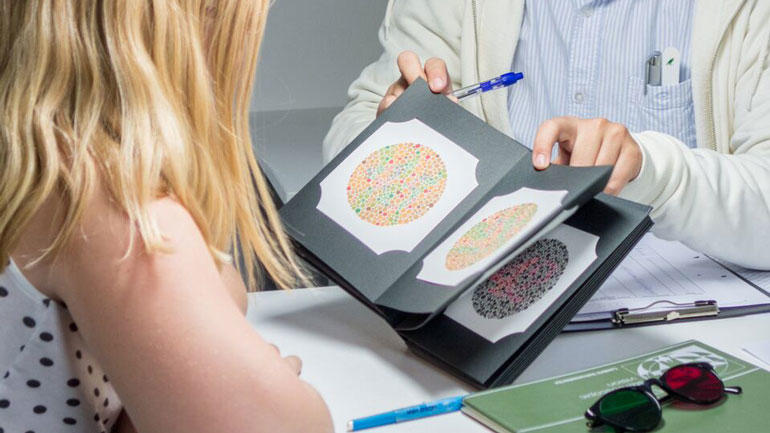The Southeast Norway Vision and Visuomotor Study (SNOW)
The SNOW Study is a study within the National Centre for Optics, Vision and Eye Care’s larger Eye & Vision research program. The study focuses on children’s development of refractive errors, vision and motor skills and how these interacts with health and learning through primary and secondary schools in South-Eastern Norway.
Examination of children, adolescents and young adults
Factors one should be aware of
- Has one eye that turns outwards.
- Reports double vision.
- Covers one eye when he / she reads.
- Behaves clumsily, constantly bumping into door frames or the like.
- Inattentive or guessing when something is happening at a distance, such as on the blackboard in the classroom.
- Unusually short reading or writing distance. Holds objects very close.
- Uncomfortable when looking at the blackboard or TV, tends to sit closer.
- Turns the head in an unusual position.
- Often rubs his / her eyes.
- Gets tired quickly of work that is visually demanding up close.
- Has a short attention or little endurance when it comes to reading or other vision-demanding activities up close.
- Avoids reading or working up close.
- Often loses track of the line when he / she reading.
- Has frequent headaches.
- Has difficulty remembering what he / she is reading.
Signs of hyperopia
- Quickly becomes restless or tired of near work such as reading and homework.
- Squints their eyes when reading or doing homework, or when using a tablet.
- Bumps into things (door frames, tables, etc.).
- Problems with distance judgement, e.g. to catch a ball or pour water into a glass.
- Sees double.
- Seems clumsy.
Signs of myopia
- Unusually short reading or writing distance. Holds objects very close. Sitting close to the TV.
- Problems recognizing faces and signs at a distance.
- Bumps into things (door frames, tables, etc.).
- Problems with distance judgement, e.g. to catch a ball or pour water into a glass.
- Squints when looking at things from a distance, e.g. TV or cinema.
- Seems clumsy.
The use of Eye drops
Eye drops are routinely used when performing an eye examining of children and youngsters. The eye drops are used to relax the eye so that an accurate result of refraction can be achieved. This is done as part of the vision examination in the vision clinic and in some schools as part of the school vision testing.
Cyclopentolate 1% is usually applied. They prevent the eye from focusing at close distance, so that the optometrist can get a more accurate measurement of the optical refraction of the eye. It takes 20-30 minutes for the drops to work, and it can take up to a day before you can see clearly at near again. In addition, you will get large pupils that make you more sensitive to light. The vision will be perceived as blurred at short distances (and in some cases also at longer distances), and you may have problems with near work (for example reading). We recommend that you avoid for example cycling until the vision is normal again. It is recommended to wear sunglasses outdoors whilst the pupil is large.

